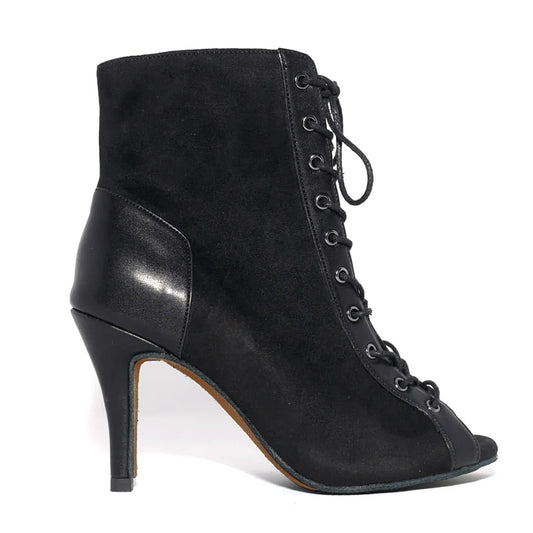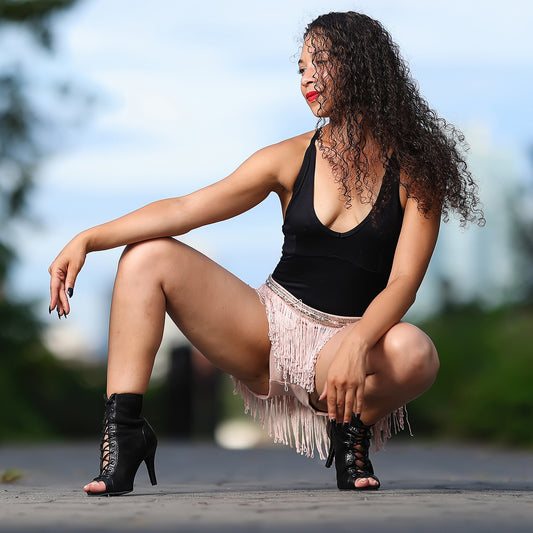
Photo Credit: Frederick news post
The COVID-19 pandemic put a stop to most social and professional activities - including social dancing, dance classes, dance workouts, etc. Most of us are now forced to dance at home with no space or equipment for practice.
Despite many studios, gyms, and social dance venues opening up, going out to dance is still a slippery slope if you’re 100% healthy - what more for the immunocompromised?
Before heading out for a bit of social dancing, it’s essential to stick to infection prevention guidelines to protect yourself, especially if you’re immunocompromised. What does it mean to be immunocompromised, you ask?
An immunocompromised person has a weak immune system, thus having a higher risk of infection and illness. Immunocompromised people are some of the most vulnerable during a health crisis like, you know, the global COVID pandemic.
What makes a Person Immunocompromised?
Good question.
People who have a weak immune system live with progressive or chronic diseases like lupus, diabetes, bronchial asthma, hypertension, etc. are immunocompromised. Undergoing specific medical treatments could also wreak havoc on the immune system. For example, if you are healing from surgery, recovering from a disease, or taking meds to control a particular condition, you are considered immunocompromised.
If you are immunocompromised, you’ll need to be extra careful as you venture outside for practice or social dancing because you are more vulnerable to infections than healthy folks. You have to wash your hands frequently, avoid touching your face, wear a mask, and practice physical distancing. All these extra precautions make it virtually impossible to dance the same way as before, but hey, this is the new normal.
How to Survive the New Normal as an Immunocompromised Dancer
At-Home Training
Say, you have a condition that makes you highly vulnerable to infection. You have to remain at home for your safety, even if dance studios and social dance events are already open. This is a matter of personal choice, of course. If you want to be safe and train at home, you can. Here are some tips:
Take an Online Social Dance Class: That’s right, social dances are now available online too! If you have come to the point that you’re totally comfortable training at home during quarantine, you can continue doing what you’re doing this year. Lots of studios are now offering online classes, and most of the classes are customized for specific groups of people.
If you are taking or conducting an online dance class, remember to:
- Check your internet connection
- Clear as much space as possible so you can move freely during the class
- Move the internet router as close to the space you’ll use to dance as possible for better service
- If you are sharing WiFi with other people in your home, choose a low-volume time
-
Set up your device 15 minutes before the actual class and test out the device
Check the lighting, make sure you look good on the screen, especially if you’re the dance teacher - Be patient - we’re all adjusting to the new normal, and it’s okay if you come across technical hiccups
At-Home Workout: Even in the middle of quarantine, you should keep your body in tip-top shape! You can do that by working out at home for baseline conditioning. You can check out various video-sharing platforms like Vimeo and YouTube for workout programs that you can do at home. You can also sign up for workout and cross-training classes and go for a 3-times a week program. If you are set to return to the studio, you need to gradually intensify your workout until your body becomes used to your old schedule.
Don’t think that dancing at home means working extra hard to sharpen your dance skills. You need to pace yourself because the body takes time to work itself back up to peak performance level. You’ll need to practice consistently, take breaks in between, and eat healthy food to stay in shape and strengthen your immunity.
In-Person Dance Lessons
If in-person dance lessons or dance events are allowed in your local area, you’ll need to stick to basic health protocols to minimize your risk of infection. This goes if you’re a dancer attending a class, attending a social dance event, or a teacher conducting the dance lessons.
- Wear a mask if you’re a student/social dance attendee
- Require everyone to wear a mask if you’re a dance teacher
- Stick to the marked spot on the dance floor to maintain your space bubble
- If you are dancing with a partner, mirror the movements and turn to face a partner to maintain a safe physical distance
- Attend events in well-ventilated areas - like the outdoors, near open windows, etc.
- Avoid touching surfaces
- Avoid touching your face
- Dispose of your face mask properly
- Keep a pack of antibacterial wipes or a bottle of alcohol in your bag
Create a Routine
It can be challenging to stick to the same schedule when you’re not motivated to go out after quarantine. Developing a routine will help you keep your activities on track regardless of whether you’re at home taking virtual classes or going to the social dance event in person. It also gives you a sense of purpose and accomplishment.
Before preparing your breakfast, start your day with a light workout - like a 20-minute yoga, Pilates, or gentle stretching. Practice mindfulness throughout the day. Remember, your mood will set the tone of your day, and it will spill over everything you do, so keep the mood light and bright. Don’t forget to take some downtime for yourself and indulge in relaxing activities to rest and recover after dancing.
The pandemic tested our abilities to overcome sudden changes in our personal and professional lives. It helped us learn more about ourselves as we go through these changes. For the immunocompromised, the pandemic doesn’t have to mean staying stuck at home. With these tips, you can do what you always love to do - which is dancing - without sacrificing your health and safety.







